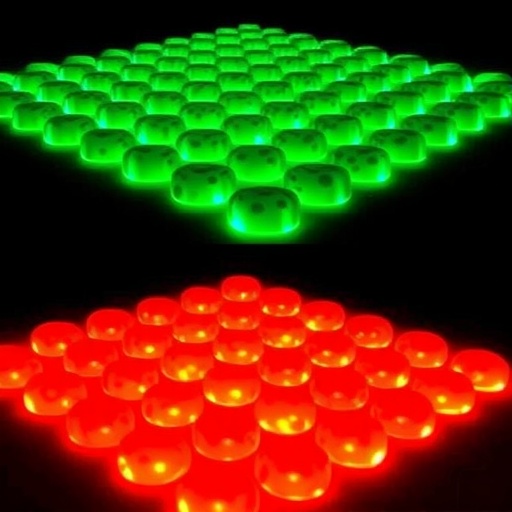Researchers from the Institute of Science Tokyo, in Japan, have devised an innovative and cost-effective approach for analyzing interfacial molecules by combining a well-established technique known as attenuated total reflection infrared (ATR-IR) spectroscopy with precise gap-control mechanisms and advanced data analysis methods. This groundbreaking method, termed Gap-Controlled Infrared Absorption Spectroscopy, presents a significant breakthrough in the realm of interfacial spectroscopy, which has long been hampered by the difficulties associated with isolating subtle signals from the molecular interfaces against the dominant background signals from the bulk materials.
The significance of interfacial molecules cannot be overstated; they play critical roles in various scientific and industrial applications, ranging from materials science and chemistry to biology and nanotechnology. These molecular interfaces are found on solid surfaces, thin films, and liquid boundaries and govern essential processes such as electrochemistry and molecular interactions in biological systems. However, studying these interfaces has been challenging due to conventional spectroscopic techniques that often struggle to detect the minute signals that are indicative of interfacial phenomena.
Drawing on ATR-IR spectroscopy, the research team sought to overcome these challenges by meticulously controlling the distance between the infrared transparent crystal and the sample. This nanometre-scale control allows researchers to vary the influence of interfacial molecules, enabling a clearer extraction of the signals that are typically drowned out by more robust bulk material signals. By introducing this distance-control mechanism, the team significantly enhances the sensitivity of the measurements, making the analysis of interfacial molecules more accessible and reliable.
The researchers employed multivariate curve resolution (MCR) methodology, an advanced mathematical technique that separates overlapping signals from a mixed dataset, to further enhance the performance of their innovative spectroscopic method. MCR allows them to dissect the intricate data collected during experiments, effectively distinguishing the subtle signals related to molecular interfaces from the background noise created by bulk materials. This capability to filter out irrelevant information is pivotal in achieving accurate and meaningful results from their analyses.
In validating their technique, the team conducted various experiments to assess its applicability across different systems. They successfully analyzed water molecules on self-assembled monolayers and quartz surfaces under various pH levels, and even examined polystyrene, a common material utilized in biological research and cell culture applications. The outcomes were remarkably consistent with results obtained from two other sophisticated interfacial techniques, sum frequency generation (SFG) spectroscopy and surface-enhanced infrared absorption spectroscopy (SEIRAS), indicating that their gap-controlled method is both reliable and practical for a broad array of scientific inquiries.
The implications of this research extend far beyond the laboratory. As interfacial phenomena are central to developing innovative technologies, such as advanced coatings, biomaterials, and nanodevices, the practical nature of this gap-controlled ATR-IR technique presents a promising avenue for future breakthroughs. Not only does it allow researchers and industry professionals to conduct intricate studies which were previously limited by high equipment costs, but it also democratizes access to advanced spectroscopic methods, paving the way for wider adoption across various fields of science and engineering.
As the research team continues to refine this technique, they have expressed hopes of developing functionalities that will allow for real-time monitoring of dynamic interfacial processes. This capability would significantly advance the understanding of molecular dynamics and interactions at interfaces, providing a powerful tool for fundamental research as well as industrial applications.
The simplicity of this innovative method is another advantage that researchers at the Institute of Science Tokyo emphasize. By building upon existing ATR-IR technology, which is widely available in laboratories around the world, there is no need for costly new instruments or highly specialized techniques to achieve insightful results when studying interfacial molecules. This approach lowers barriers for smaller and resource-limited laboratories, fostering an environment of continuous innovation and exploration in the essential field of interfacial science.
In summary, the development of Gap-Controlled Infrared Absorption Spectroscopy by the Institute of Science Tokyo marks a significant stride in the study of molecular interfaces. By enhancing the sensitivity and specificity of ATR-IR techniques through precise control and advanced analytical methods, the research team has paved the way for new explorations into the complexities of interfacial phenomena that shape our understanding of material behaviors and interactions at microscopic levels.
This promising technique opens doors to scientific advancements in multiple domains. Researchers from academia and industry now have a tool that could revolutionize the way in which interfacial interactions are studied and understood, positively impacting fields like nanotechnology, materials science, and biochemistry. The path ahead is filled with potential as these scientists continue to explore and refine their method, eager to unlock new insights that could redefine the boundaries of existing knowledge in the field.
With this research, we can look forward to the future of materials science and biology being advanced through the lens of interfacial phenomena. The continued evolution of Gap-Controlled Infrared Absorption Spectroscopy may soon yield transformative applications, reinforcing the idea that scientific ingenuity and technological advancement can go hand in hand, driving progress towards a more refined understanding of the world at its most fundamental levels.
Subject of Research:
Article Title: Gap-Controlled Infrared Absorption Spectroscopy: A Unique Interface-Sensitive Spectroscopy Based on the Combination of Linear Spectroscopy and Multivariate Curve Resolution
News Publication Date: 13-Sep-2025
Web References:
References:
Image Credits: Credit: Institute of Science Tokyo
Keywords
Spectroscopy, Data analysis, Information processing, Materials science, Nanotechnology, Life sciences
Tags: analyzing molecular interfacesapplications in nanotechnology and biologyATR-IR spectroscopy advancementscost-effective spectroscopy methodselectrochemistry and molecular interactions.Gap-Controlled Infrared Absorption Spectroscopyinnovative spectroscopic techniquesinterfacial molecular analysisinterfacial molecules in materials scienceinterfacial phenomena detectionnanometre-scale gap controlovercoming spectral background noise





